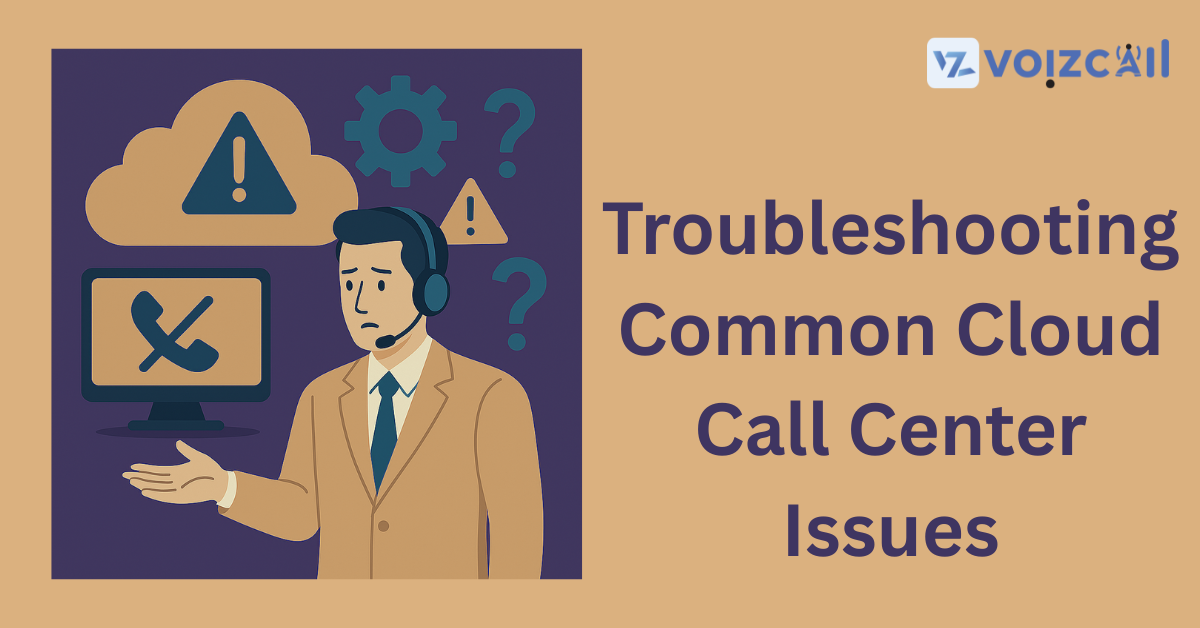


19/May/2025
Cloud call centers are now a must for companies that need flexibility, scalability, and cost savings. But like any other technology, they have their own set of problems. Knowing cloud call center issues and how to solve them is vital to ensuring smooth operations and great customer service.
In this call center troubleshoot guide, we will dissect some of the most prevalent issues you could have and provide handy advice on how to remedy cloud call center issues.
1. Call Quality Problems: A No. 1 Cloud Call Center Issue
Poor call quality is one of the most common grievances in cloud call centers. This involves dropped calls, delay, echo, or garbled audio. These issues are typically brought about by low bandwidth, network latency, or server congestion.
To debug, make sure your internet is up to speed and meets the recommended bandwidth for VoIP service. Application of Quality of Service (QoS) settings on your network prioritizes call traffic and minimizes latency. Also, frequent monitoring of your cloud provider's status can determine whether outages or maintenance is affecting performance.
2. Connection Drops and Downtime
Unexpected downtime or connection loss interrupts customer communication and hurts your brand image. The reasons can vary from ISP outages, server faults, or misconfigured firewalls preventing VoIP traffic.
This is an essential entry in any call center troubleshooting reference. Update your firewall rules as needed to permit required VoIP ports, and be prepared for failover with a backup internet connection. Also, selecting a trusted cloud call center vendor with robust SLAs (Service Level Agreements) can reduce the risk of downtime.
3. Integration Issues with CRM and Other Tools
Cloud call centers frequently must be integrated with CRM systems, ticketing platforms, and analytics tools. Integration malfunctions can result in data syncing problems, missed calls, or faulty reporting—frequent pain points in frequent VoIP call center woes.
This can be fixed by checking API keys and permissions, checking software versions match, and performing integration tests on updates. The use of middleware or integration platforms can also make data flow between systems smoother and less prone to errors.
4. Agent Training and User Mistakes
Call / Email for Sales Inquiry Today
Occasionally, the cause of cloud call center issues isn't technology but user mistake. Agents who are not familiar with the platform can mishandle calls, miss logging data, or misread system notifications.
Implement in-depth training programs on your particular cloud call center tool and refresh training periodically as new features are released. A knowledgeable team minimizes mistakes and increases customer satisfaction.
5. Security Issues and Compliance
Data breaches and data leaks are a critical threat in cloud environments. In case they are not well secured, call centers endanger sensitive customer information.
A solution to cloud call center issues is to introduce robust security practices like end-to-end encrypted VoIP communication, multi-factor authentication, and timely software updates. Also, have your system meet industry requirements like GDPR, HIPAA, or PCI-DSS based on your industry.
Final Thoughts: Mastering Cloud Call Center Troubleshooting
It is intimidating to work with cloud call center issues, but having a well-defined call center trouble-shooting guide keeps service standards high. From enhancing call quality and uptime to securing data and training agents, working through these areas makes your cloud call center operate at maximum efficiency.
By proactively identifying and resolving common VoIP call center issues, you’ll keep your customers happy and your operations seamless. When challenges arise, remember that thorough diagnosis and timely fixes are key to fixing cloud call center problems.